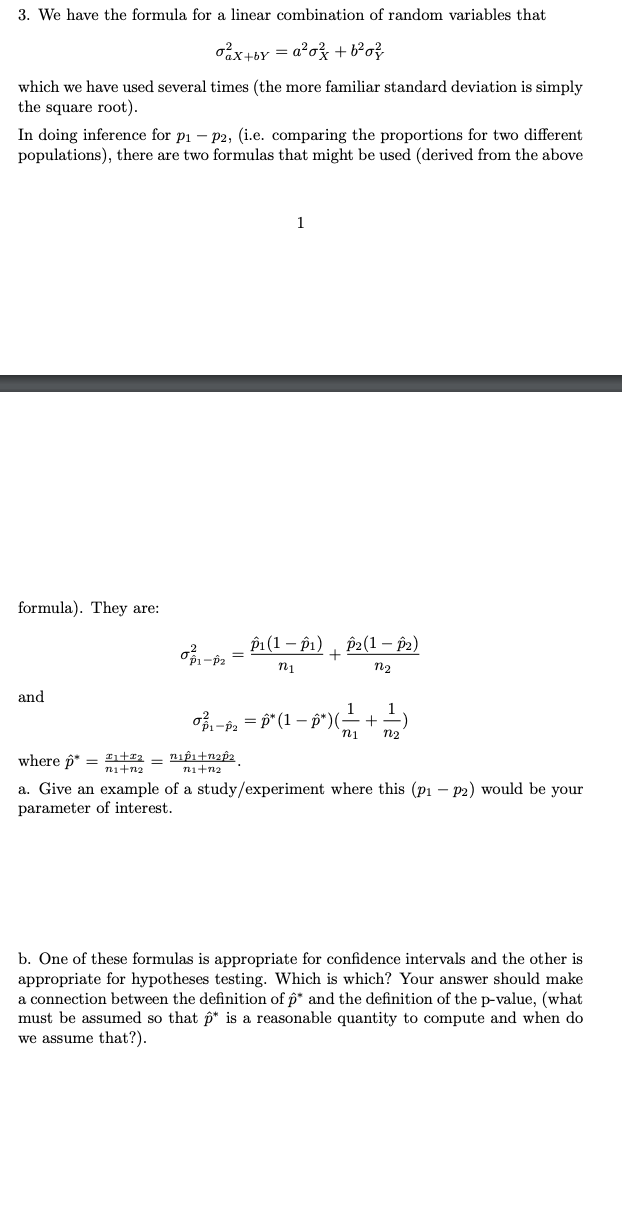Question
3. We have the formula for a linear combination of random variables that ? 2 aX+bY = a 2? 2 X + b 2? 2
3. We have the formula for a linear combination of random variables that ? 2 aX+bY = a 2? 2 X + b 2? 2 Y which we have used several times (the more familiar standard deviation is simply the square root). In doing inference for p1 ? p2, (i.e. comparing the proportions for two different populations), there are two formulas that might be used (derived from the above 1 formula). They are: ? 2 p?1?p?2 = p?1(1 ? p?1) n1 + p?2(1 ? p?2) n2 and ? 2 p?1?p?2 = ?p ? (1 ? p? ? )( 1 n1 + 1 n2 ) where ?p ? = x1+x2 n1+n2 = n1p?1+n2p?2 n1+n2 .
a. Give an example of a study/experiment where this (p1 ? p2) would be your parameter of interest.
b. One of these formulas is appropriate for confidence intervals and the other is appropriate for hypotheses testing. Which is which? Your answer should make a connection between the definition of ?p ? and the definition of the p-value, (what must be assumed so that ?p ? is a reasonable quantity to compute and when do we assume that?).

Step by Step Solution
There are 3 Steps involved in it
Step: 1

Get Instant Access to Expert-Tailored Solutions
See step-by-step solutions with expert insights and AI powered tools for academic success
Step: 2

Step: 3

Ace Your Homework with AI
Get the answers you need in no time with our AI-driven, step-by-step assistance
Get Started


